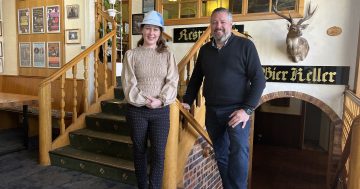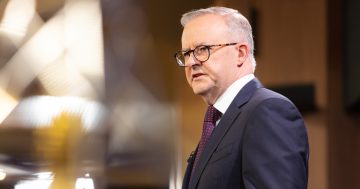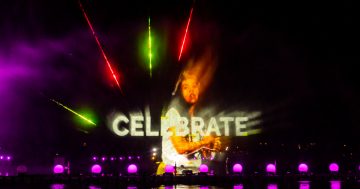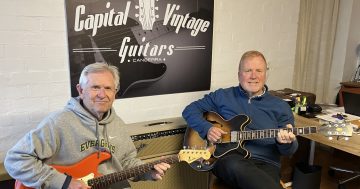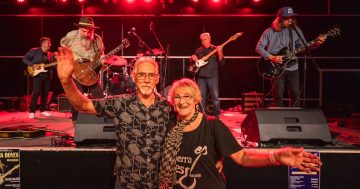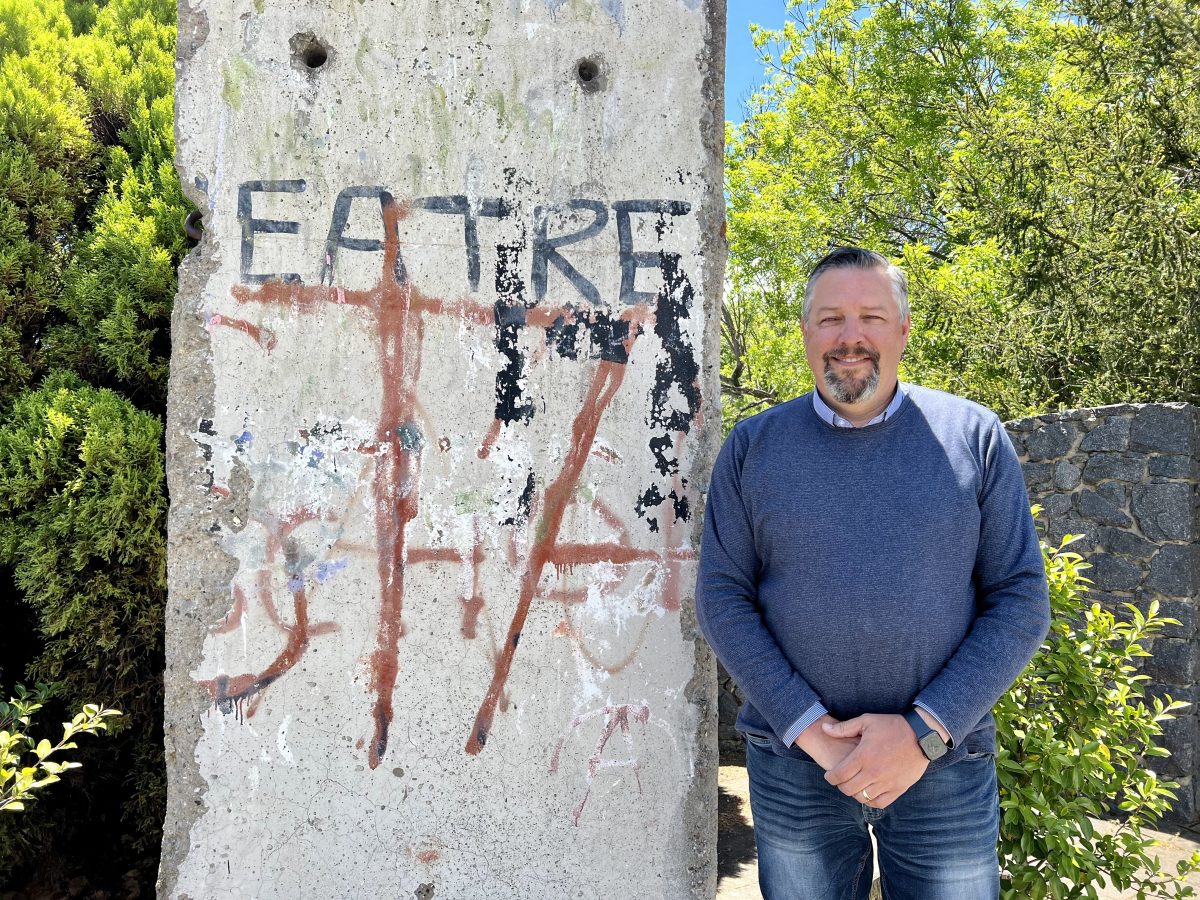
Harmonie German Club CEO Paul Berger standing next to a segment of the Berlin Wall. Photo: James Coleman.
It’s regarded as one of the most significant events of the 20th century. And not just because David Hasselhoff was there wearing a leather jacket and belting out an anthem about freedom from the top of a crane.
Every day, Paul Berger is reminded of 9 November 1989, when the infamous Berlin Wall fell and East and West Germany were united again. The CEO of the Harmonie German Club in Narrabundah stores part of it in the club’s front yard.
The enormous three-tonne segment once stood in Potsdamer Platz, close to the Brandenburg Gate.
“This is a piece of recent history most of our German members lived through,” he says.
“Stories of the kids that could no longer walk to their grandparents’ house because the wall separated them. Many of these people did not see their family members for 28 years.”
Construction of the wall started in the early morning hours of 13 August 1961 when coils of barbed wire were strung along the border of the Soviet sector in the heart of Germany’s capital city. Over the next few days and weeks, these were replaced by a wall of concrete slabs and hollow blocks.
Families were split almost overnight, with little hope of seeing each other again. Soviet guards were ordered to shoot on sight anyone trying to defect to the free western side. A wide clearing by the wall made sure they had a clear line of fire too.
It’s thought 171 people were killed attempting to get over, under or around the wall.
Paul says one of their members, Erika Merkel, lived within 3 km of the border and was forbidden by her parents to even look in the direction of the wall as the family walked to church each Sunday.
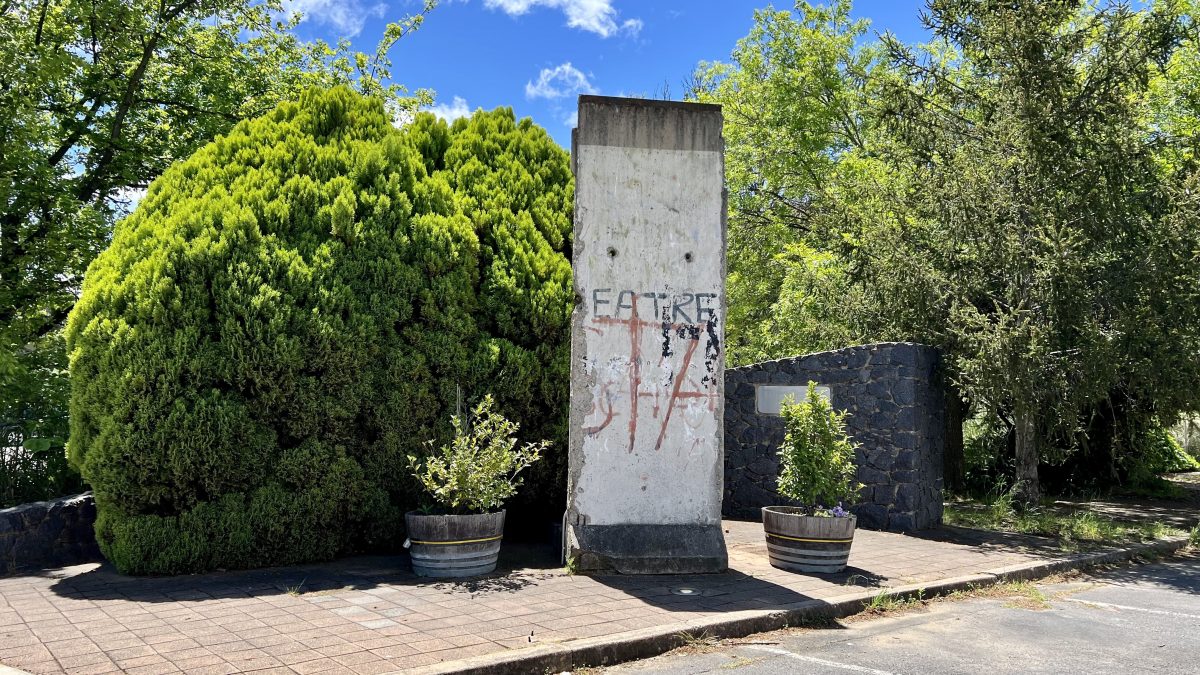
The segment weighs about three tonnes and measures more than three metres tall. Photo: James Coleman.
“If Erika wanted to go to the next village on the same side of the wall, her family would need to get the approval of the Stasi commander in her own village.
“Her grandmother lived on the other side of the wall, but she never saw her again.
Paul describes a terrifying life on the eastern side of the wall, under constant fear of the Stasi (East German Ministry for State Security) and their spies.
“They were known to be relentless in their efforts to stop people trying to get to the west and relentless in persecuting people that believed in the western ideology.”
On the other side of the world, it was a very different situation. The so-called ‘Jennings Germans’ were defying the divide between East and West and working together to give Canberra its own German club.
The 150-odd carpenters had made a name for themselves, building about 1850 Canberra homes for construction company AV Jennings. In 1961, at the same time the wall was going up, they decided to create ‘Harmonie’.
“These carpenters were known as visionaries for this back home in Germany,” Paul says.
On the evening of 9 November 1989, East German government official Gunter Schabowski dropped a surprising line during a press conference.
“Permanent relocations can be done through all border checkpoints between the GDR [East Germany] into the FRG [West Germany] or West Berlin,” he said.

The plaque serves as a “reminder that no man-made barrier can repress the spirit of freedom”. Photo: James Coleman.
The public took it and ran with it. By 11 pm that evening, the initially confused guards had opened the gates. Germans were reunited for the first time in nearly 30 years. And over the coming hours and days, large chunks of the wall were ripped to shreds with sledgehammers.
By 1992, most of the 5400 segments had been crushed into road base, and only 600 remained. These became hot property around the world, and Canberra wasn’t to miss out.
Led by the late president Gunter Koerne, the Harmonie’s club committee purchased a piece of the wall for 500 Deutsche marks. A young member, fresh out of architectural school, was tasked with crafting a space for the 3.6-metre tall solid concrete segment and base within the grounds of the clubhouse.
A few months later, all three tonnes of it arrived on board a Russian container ship. The official unveiling took place on 3 October 1992. Dr Otto Roever from Canberra’s German embassy attended.
Paul says it’s one of only two segments of the wall reported to be in Australia, although for many years the other was missing.
“Just recently this second segment found in an old warehouse in western Sydney. It now sits in the gardens of the Goethe-Institut in Sydney as a memorial.”

The graffiti is exactly as it appeared when the segment was removed. Photo: James Coleman.
Canberra’s segment is covered in original graffiti, and despite the best efforts of their club members, Paul says they can’t make out what word the bold black letters spelt out. They’re also in the process of fitting out a display inside the club, telling the story of the Berlin Wall and what it means for their members.
“It’s a reflection of the time when our members were separated from their friends and families for 28 long years by an ideological barrier that caused heartache and sorrow for many people,” Paul says.
“This anniversary represents freedom and common sense.”















